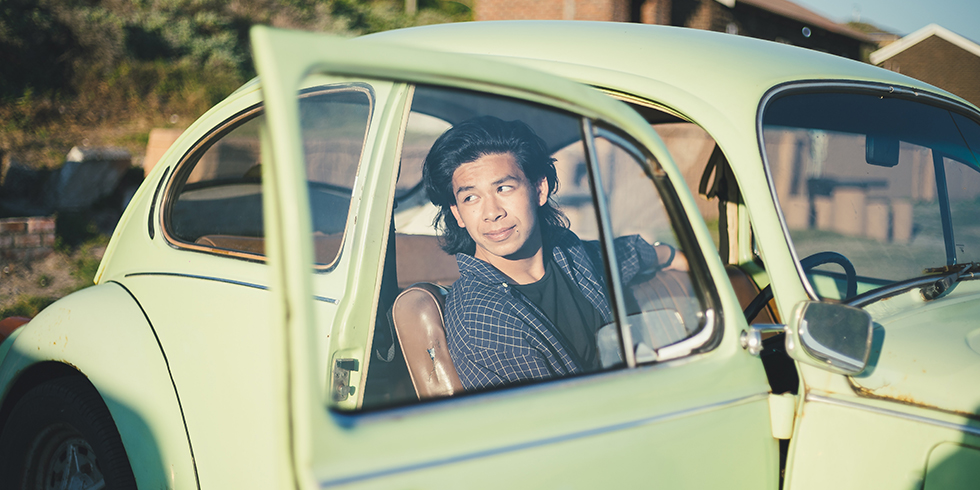
The Washington Post
There’s an article on The Washington Post we thought would be great to share. Although you can read the post below, we recommend you head over the the site for optimal reading experience.
Why Cars are a Popular Place for a Good Cry
2018-12-29 15:59:11-05[The Washington Post] By Cara McDonough January 13
Maybe a particularly moving story on public radio sets you off. Or simmering frustration after fighting with a spouse. Maybe it’s a song that reminds you of a loved one who’s died, or it’s been a bad day at work.
Maybe you’re just really tired.
Whatever the cause, it seems that a lot of us cry in the car.
“Car cries are kinda my thing,” one friend wrote on Twitter after I brought it up. Another added: “I have a long and storied car-cry history, including favorite places and full discography.”
People I asked about car-crying brought up triggers many can relate to: tears shed after dropping a child off at college, or flowing during the car ride when moving away from a beloved home. One friend told me it’s long drives after busy days that get to him: “Solitude and time uncork all the feels.”
I get it. My dad died last year and the car has been a significant spot for my grieving process; it’s probably the place I’ve cried the most since losing him. Most bouts seem to happen on the drive home after dropping my youngest child off at preschool and finding myself suddenly alone for the first time after our always busy and draining morning routine.
So why is letting down your guard behind the wheel a phenomenon?
For many, music is a big factor. My friend isn’t the only one who has a car-crying playlist; my own cache of surefire tear-jerkers includes Sia’s “Breathe Me” and Nina Simone’s version of “Here Comes the Sun.”
Paul Silvia, Luck Spinks Keker Excellence professor at the University of North Carolina at Greensboro, looked at the deep emotional responses people have when listening to music, including crying. When his team asked people about crying in response to music, they reported that the most common place it happens is at home. The second most common is in their cars.
“It’s a surprisingly contemplative place,” Silvia said, noting that there’s temperature control and usually a nice audio system. More important, people are often alone, headed to or leaving work or home, or on a long road trip, providing a rare freedom that extends to the evocative music they choose.
“When people are by themselves, they tend to break out stuff that they don’t listen to around people,” Silvia said. “People are much more likely to listen to music that’s depressing, or reminds them of personally sad experiences.”
They even do it on purpose, he said, inviting a “good cry” when it’s needed. There’s the psychological torture of playing “our song” after a breakup, for instance.
But it’s not always sad, he said. People are moved to a more euphoric brand of crying with certain music, such as the bigger, bombastic numbers you hear in a Broadway musical or sung by a choir. These intense but inspired bursts of crying often happen in the car, as well (this happened to me recently when I played “Do You Hear the People Sing” from “Les Miserables” for my children as we drove to after-school activities; I just couldn’t stop thinking about the earthshaking power of a citizenry bent on righteous revolution. At that moment, perhaps thinking of the challenges our own country faces, the music made me inspired and teary.)
The thing is, while we may be technically alone in the car, we aren’t invisible. I’ve pulled up besides weeping drivers in traffic more than once, averting my glance to secure their privacy. Yet we feel protected in our vehicle, said Silvia, giving us license to let loose.
“It really is a safe cocoon spot,” he said. “Even if you’re on a busy street and people are only about eight feet away, the fact that there’s a sound barrier and you really can’t interact with these people gives you a psychological safety.”
Debbie Pausig, a licensed marriage and family therapist in New Haven, Conn., who specializes in grief, said that for many of her clients, feelings of loss — of a loved one or otherwise — manifests in the car. Sometimes, the emotion is related to hearing a particular song, or seeing something that moves them spiritually, such as a particularly stunning cloud formation. Or it just comes out of nowhere.
There’s a name for this, she said: “Grief bursts” is a term coined by Alan Wolfelt, author, educator and grief counselor who is the founder of Center for Loss & Life Transition in Colorado. Psychologist Therese Rando invented the acronym “STUG” or “sudden, temporary, upsurge of grief.”
They weren’t necessarily talking about what happens while we’re driving, but for those of us who’ve experienced an unannounced car-cry when headed to the grocery store, these terms fit.
When I mentioned I’d heard from mostly women on this topic, Pausig said she thinks men are just as prone, citing her experience counseling individuals who had lost spouses: “Actually, the men who have attended my support groups in the past are ones who freely admitted tearing up, crying, even wailing.” Drive time, she said, conjures up a lot of feelings.
“It’s a container of sorts,” she said of the car. “It’s a place where pain we’ve been avoiding comes pouring out, whether if it’s because it’s the first time we are alone that day, feeling the weight of a stressful work day, or seeing or hearing something that reminds us of a difficult experience or loss.”
While crying alone is cathartic, Pausig likes to remind people that sharing the load with a friend or professional can be incredibly meaningful for both parties. She added, however, that people don’t always want support, a hug or a reminder to “cheer up.” Sometimes, we simply want to be sad on our own terms. And, she said, that’s fine, too.
“Perhaps the safety net of being in the car is that we don’t always want to be rescued,” she said.
And Pausig — who spent 25 years in law enforcement before becoming a therapist following her husband’s death — has one last piece of advice. Car crying can be therapeutic. But it also needs to be safe.
“A lot happens in the car,” Pausig said. “But please — and this is the police officer in me — if the tears really start flowing, pull over. Then let it ride.”
The post “Why cars are a popular place for a good cry” first appeared on The Washington Post.





